Do you sometimes wish ladybugs would find your garden as easily as aphids do?
The diminutive, bright red beetles (also known as ladybirds or lady beetles, or “ladies who lunch,” as I like to call them) are coveted in the gardening world as a biological means of pest control.
They’re the good bugs, and they eat “bad” bugs like aphids, spider mites, and scale insects. (I put “bad” in quotes because all insects, no matter how pesky, have important roles in the ecosystem—even if that just means being food for predators.)
There’s even a fungus-eating ladybug, Illeis galbula, that eats powdery mildew—so if you have plants like zucchini and pumpkins that are prone to powdery mildew every year, it’s yet another reason you want to keep these beneficial insects around.
So how effective are ladybugs?
An adult ladybug can consume up to 5,000 aphids in its lifetime, and its appetite begins in the larval stage.
Ladybugs lay 600 to 700 eggs in batches of 40 to 50, all in small clusters on the undersides of leaves, and they like to lay near aphid colonies (their primary food source). The eggs hatch in 4 to 10 days, and the larvae immediately begin eating the pests.
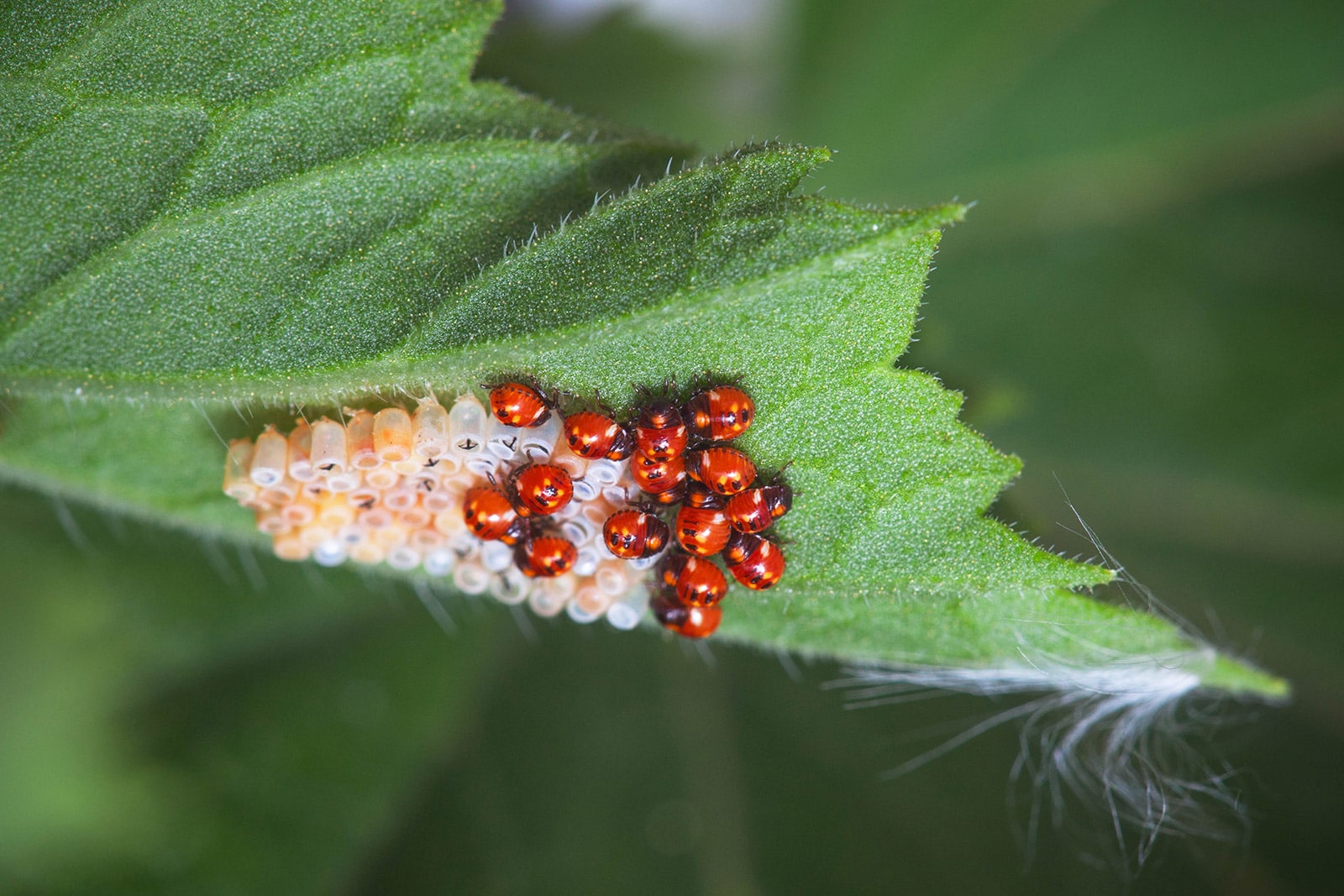
With their voracious appetites, ladybug larvae can eat up to 600 aphids each before they pupate. Once they become adults, they consume one-tenth as much, about 60 aphids per day. When all food supplies are short, ladybugs become cannibalistic.
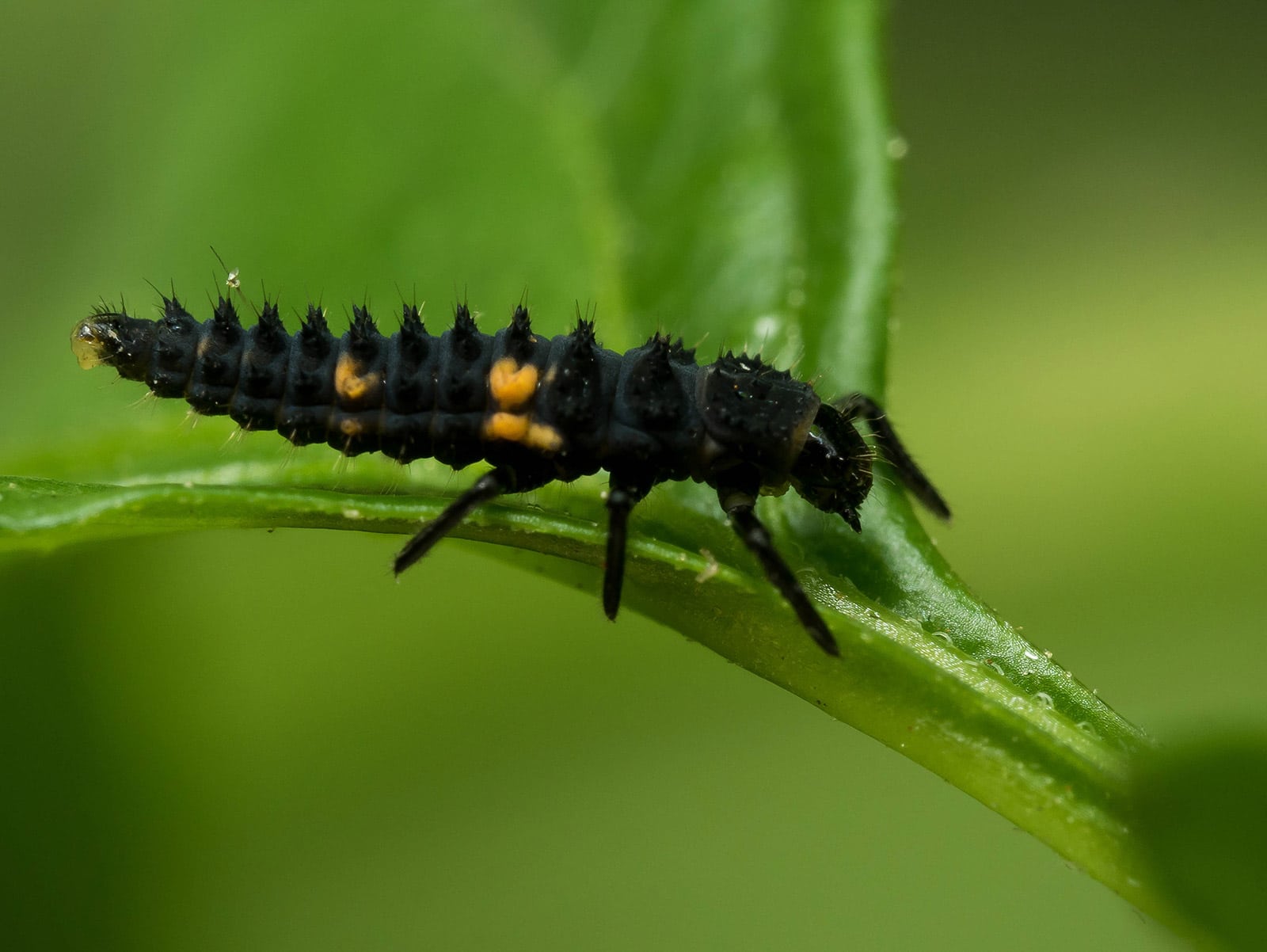
Yep, those cute and colorful bugs that your kids love to handle are actually ruthless cannibals. The larvae of several varieties of ladybugs won’t hesitate to eat ladybug eggs that are yet to hatch (basically, their siblings). Eat or be eaten, I suppose.
But for good reason: Research has found that ladybug larvae that eat unhatched family members develop faster than non-cannibal larvae, and are more likely to survive to adulthood.
Ladybugs can live for one to two years, depending on temperature, humidity, and food supply. During their lifespan, they mate every two to three days and produce eggs as long as they’ve been feeding for several weeks.
That last sentence is key.
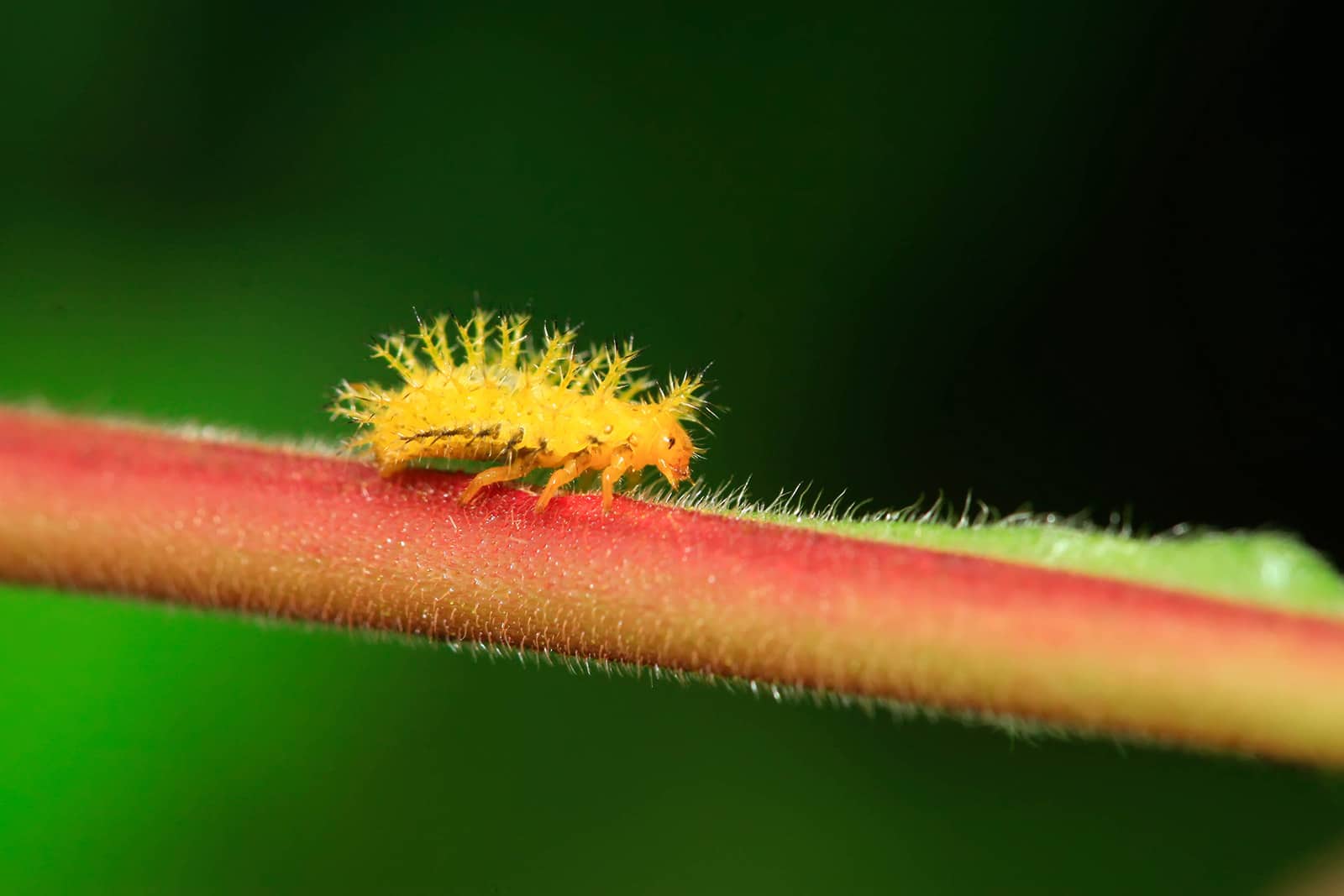
For ladybugs to be an effective method of pest control, they have to continually lay eggs and start the next generation of larvae.
And they can’t do that if they fly away from your garden.
By nature, ladybugs are migratory. They are in constant search of food and when their supply runs out, they fly to the next place—which is why people who buy ladybugs for their garden end up sorely disappointed.
So how can you keep them around?
Think of your yard as a mini ecosystem
Diversity is crucial when creating habitat and providing food for not only ladybugs, but other bugs that might not be viewed so favorably.
A healthy yard should have it all: annual and perennial vegetation, nectar sources, water sources, small wildlife and insects, and an active soil food web. If it’s devoid of pests, there’s less of a reason for ladybugs (and other beneficial predator insects, like ground beetles, spiders, lizards, lacewings, and hoverflies) to come around at all.
The trick is maintaining balance so there are plenty of aphids and other prey for their predators to consume, but not so many that they get out of control in your garden.
And that brings us to the first thing you need to know about attracting ladybugs…
Don’t get rid of all the bad bugs

While it might sound counterintuitive to let the bad bugs stay, a few here and there won’t do your plants any harm. Resist the urge to kill aphids as soon as you spot them on your plants.
If you immediately reach for a pesticide (especially in early spring when fewer food sources are available), lady beetles won’t have any incentive to stay—even if you buy and release them. Not to mention, many commercial pesticides leave residue on plants that are harmful to other beneficial bugs (including bees) and aren’t wise to spray on plants you might eat.
If you must use any kind of chemical control, opt for my simple two-ingredient insecticidal soap or store-bought horticultural oils, which do less damage to lady beetles.
But a better idea is to wait for the beetles to show up. If they’re already in your garden, they’ll find your pest problem. Lady beetles stay for the duration of a predator/prey cycle, so as long as there’s a sustainable source of food around, a good portion of the population will remain (and not fly off to greener pastures).
So how can you make sure those lady beetles got the invite to your garden? That brings us to our second trick…
Grow the right plants
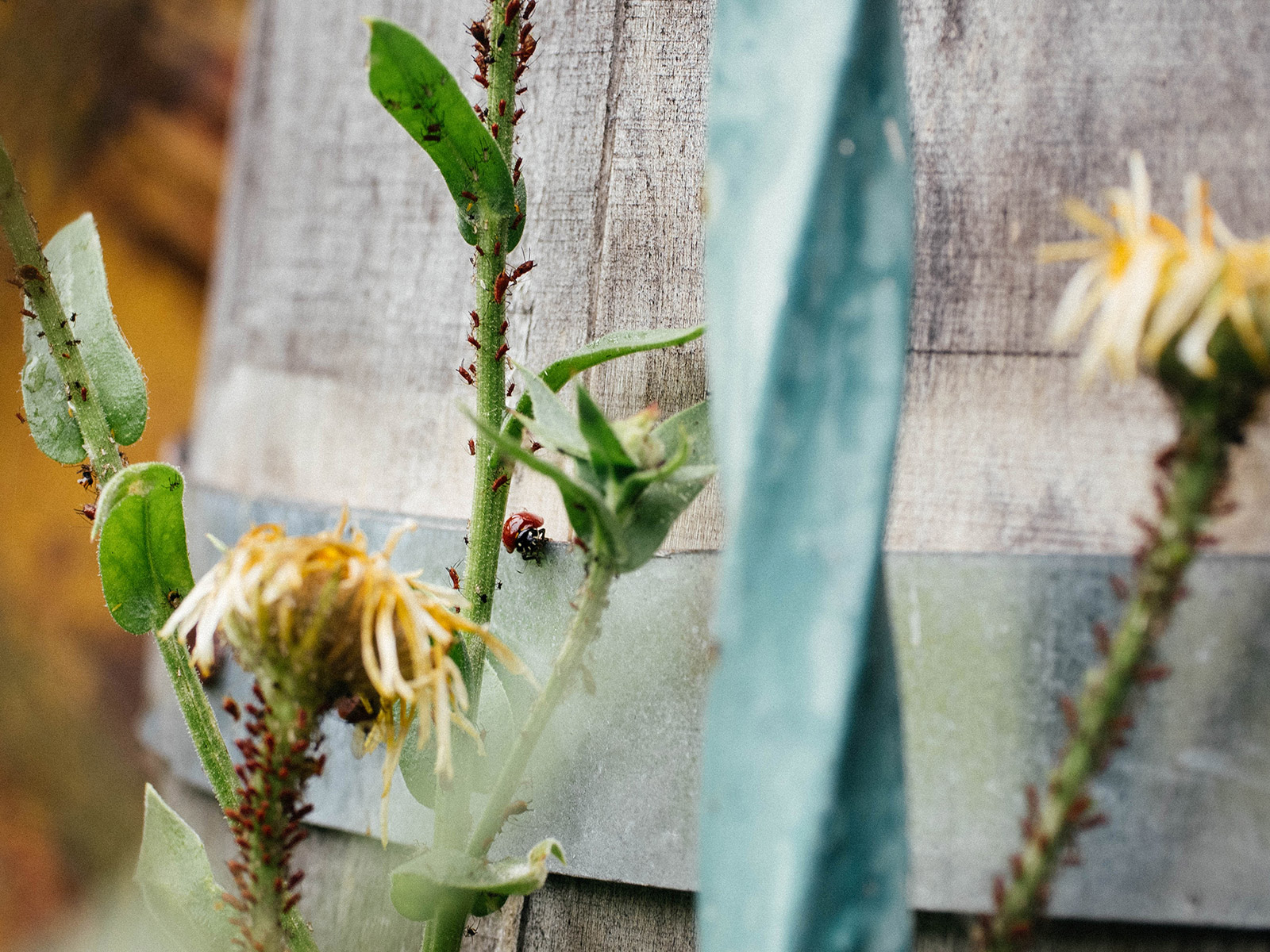
Besides pests, ladybugs also feed on nectar and pollen. They prefer small flowers, flat open petals, and umbellifers (umbrella- or disc-shaped flowers) that they can land on and crawl over easily. Many of the same flowers you’d grow for bees and butterflies are the ones ladybugs love too.
Provide a safe habitat
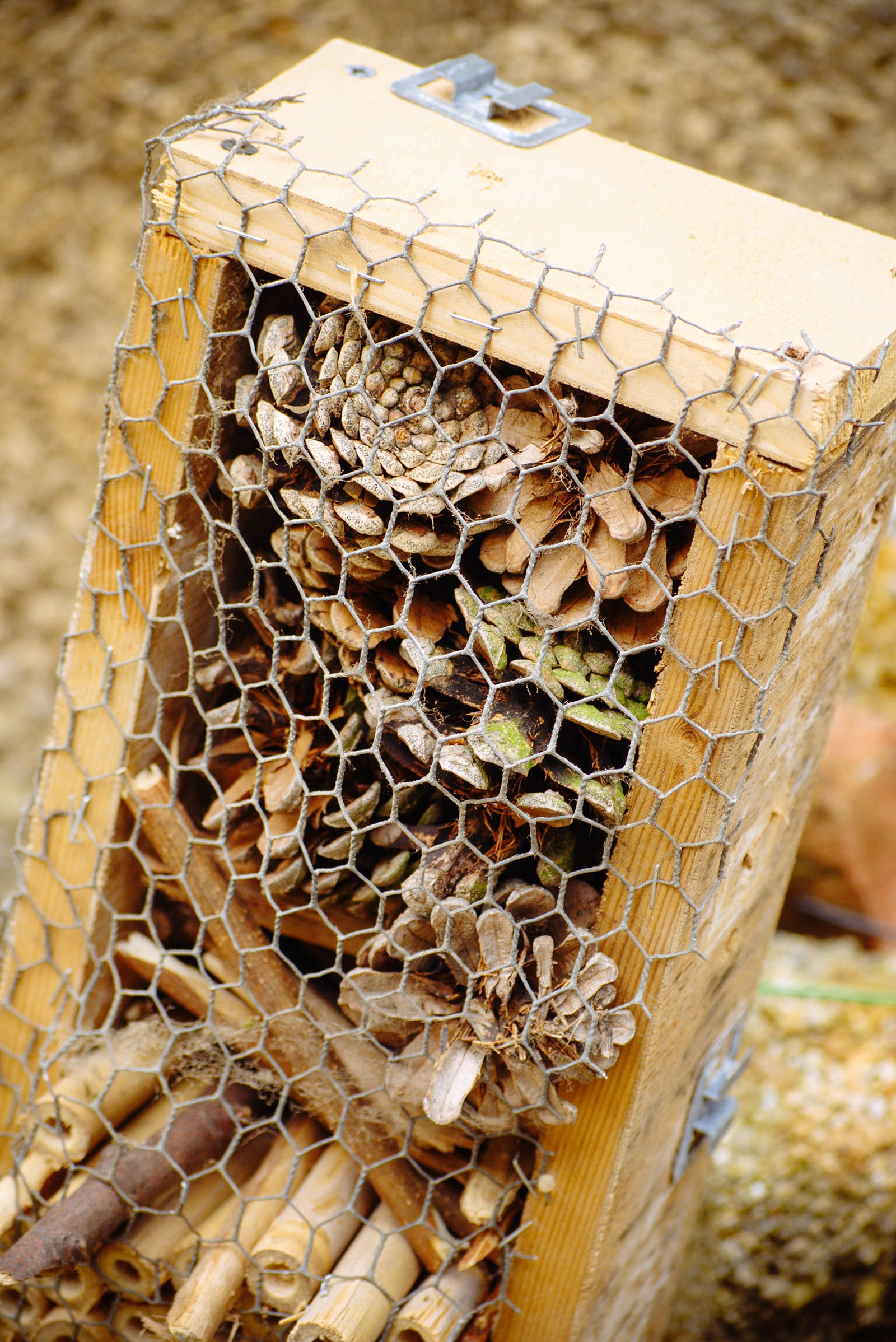
Ladybugs can’t fly if temperatures dip below 55°F. Once the weather turns colder, they prefer to shelter and hibernate and often make their home in the cracks of trees, on the wood of buildings, or under woody piles of mulch.
You can influence ladybugs to stay in the area by providing a safe location for them to overwinter. An example of this is an “insect hotel” or bug hotel, set up in an area that gets southern exposure for the best warmth.
You can create a simple, rustic insect hotel by piling a handful of pinecones together in a lightweight net (like the mesh bags that onions and garlic are stored in—save them on your next few trips to the grocery store) and mounting the habitat in a sunny spot (the higher the better) that’s protected from wind and rain, and placed far enough away from bird feeders and bird houses.
Or, you can stuff pinecones or other natural elements (like reeds, pieces of coarse bark, and dried thistle heads—objects that make good hiding spots for bugs) into a small wooden enclosure, then cover the entrance with wire mesh to keep out birds and squirrels.
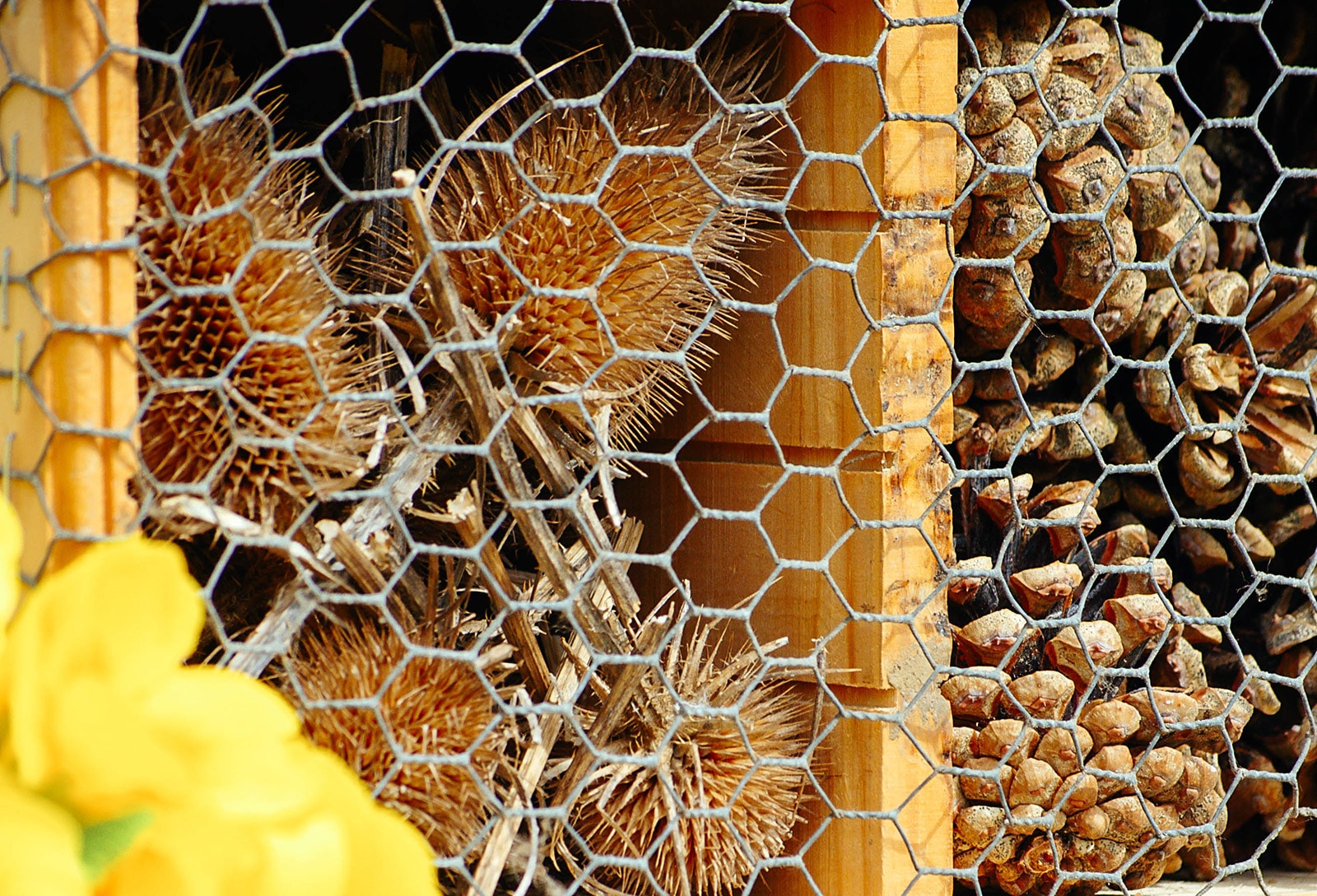
Make sure you keep the enclosure small and most importantly, simple. There are many DIY tutorials for fancy-looking “bug condominiums” online, but these are more of a detriment than a benefit because they attract too many different types of insects and make it easier for diseases to spread and wipe out all your overwintering guests.
Ladybirds often release a pheromone when they find a nice place to land, so it should help with attracting more ladybirds to your habitat.
You can also buy a ready-made ladybug house to hang from a tree or roof eave; just add pinecones or rough pieces of bark that have lots of cavities for ladybugs to shelter in.
Disclosure: If you shop from my article or make a purchase through one of my links, I may receive commissions on some of the products I recommend.
Ladybug houses
Another option (and my favorite of the lazy gardening philosophies I practice) is to let your old foliage stand over winter.
The dried flower heads, hollow stems, and dead leaves on the ground all provide excellent shelter for insects, so don’t cut them back or prune your plants until spring (before new growth emerges, but ideally after any hibernating insects wake up).
Like all garden creatures, ladybirds also need a clean source of water. It’s good practice to leave shallow dishes of water around the yard (a drip tray or plant saucer works great for this). Add a few small stones that stick out of the water a bit, so insects have a safe place to land and drink (with no risk of drowning).
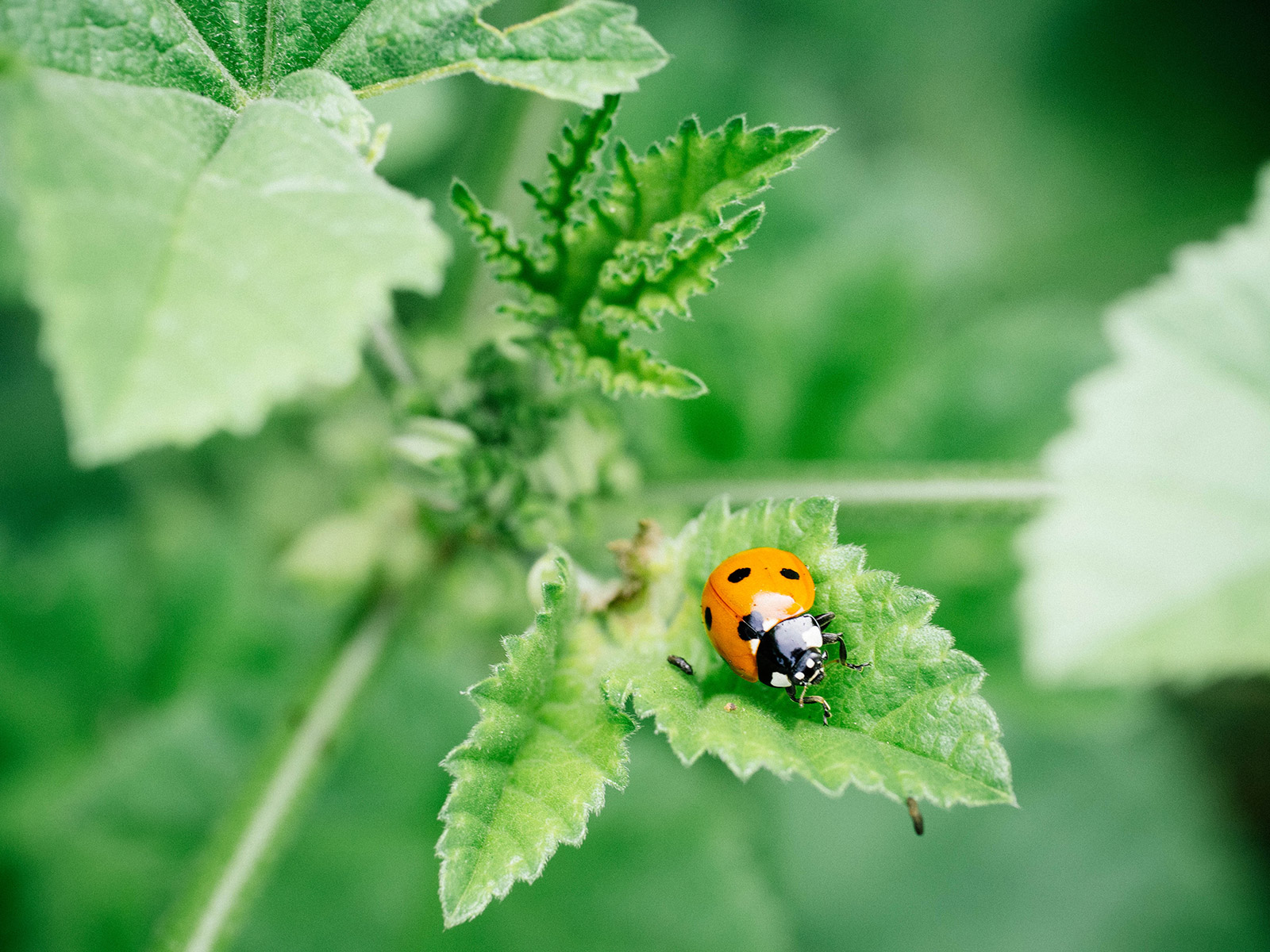
Ladybugs aren’t the only beneficial insects you should keep around.
Here are more helpful posts to help you build your own biological pest control army:
This post updated from an article that originally appeared on June 12, 2012.


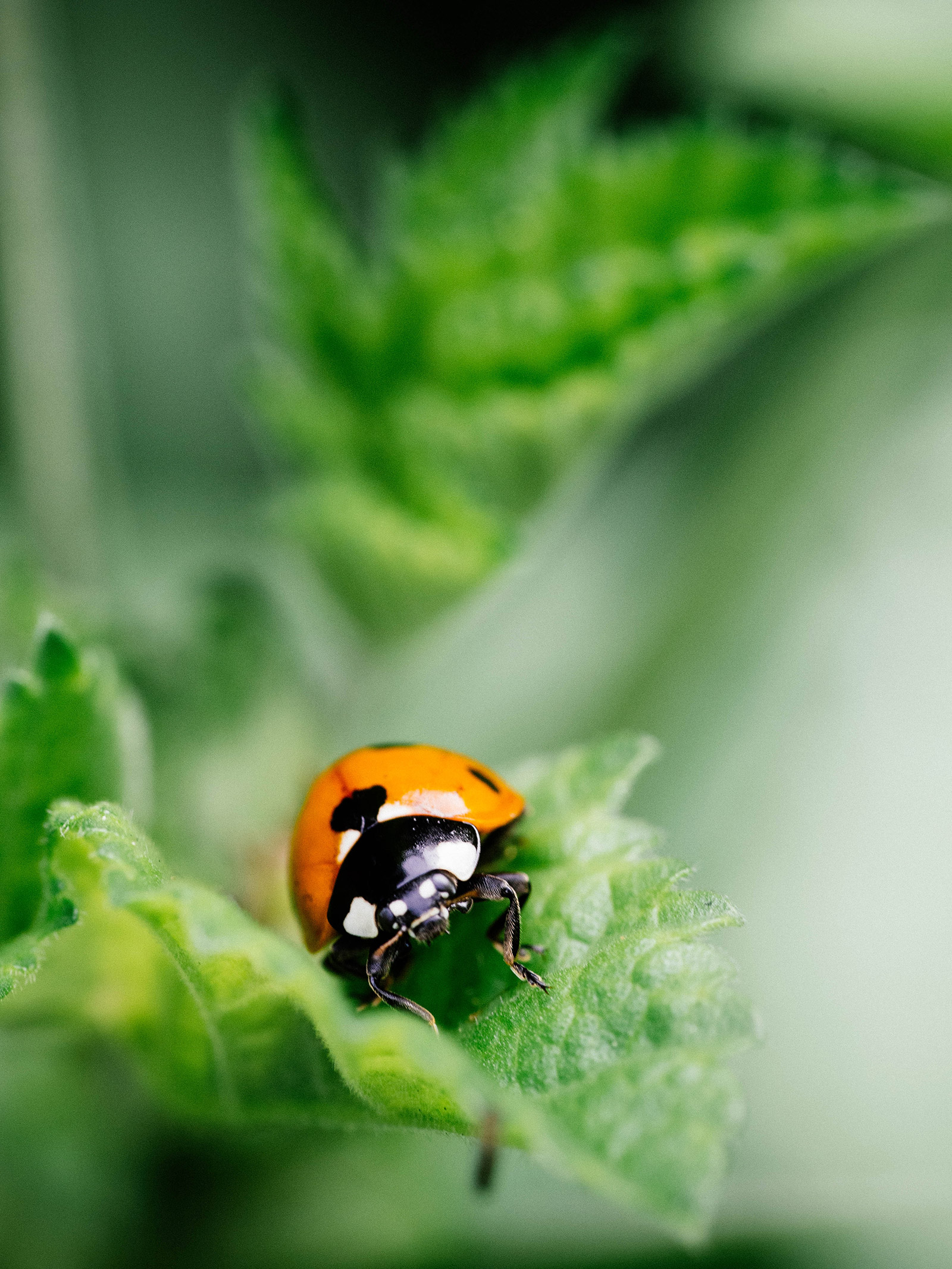













Thank you for the useful info about onions and garlic. I’m always looking to refresh my memory, or learn more.
But, my question involves beneficial insects. Is there an insect that eats squash bug eggs? They are my worst night mare. We’ve had infestations for two years and no spray seems to stop them.
Thank you.
I’m not sure about squash bug eggs specifically, but common predators of squash bugs include ladybugs, ground beetles, spiders, big-eyed bugs, and some parasitoid wasps. These can all be found in a healthy ecosystem, particularly if you plant lots of flowering, nectar-rich plant, don’t use sprays, and leave the (dead) fall foliage in place over winter.
do u have any advice on releasing lady bugs inside a grow room? found signs of spider mites….
I love your pictures! We are starting our backyard renovation and I’m so excited to get my garden going…especially chickens! Thanks for the inspiration.
Thanks Micha! Chickens will be so exciting… just keep them away from your veggie garden. This season has been particularly interesting for me now that I have a couple of choinkers (chicken oinkers) free-ranging in my backyard. 😉
Les coccinelles vont se régaler… Bonne soirée.
Your post came in handy today! I was harvesting coriander seeds and one plant was covered with aphids and ladybugs in many stages of their lives. Cool to know! Thx!
Great Article and Photos!
This is a great post! I loved learning about the Lady Beetle! I used to sell whole containers of them so people could release them at night in their gardens, in hopes that they’d lay their eggs there, piled on top of each other in that container they produce a buggy and undesirable scent from what I remember. 😉
Nature is so neat in that way. Ladybugs release that foul odor when they’re disturbed so they won’t get eaten by predators! It’s also a reason why they’re red. It’s a warning color that they’re unpalatable.